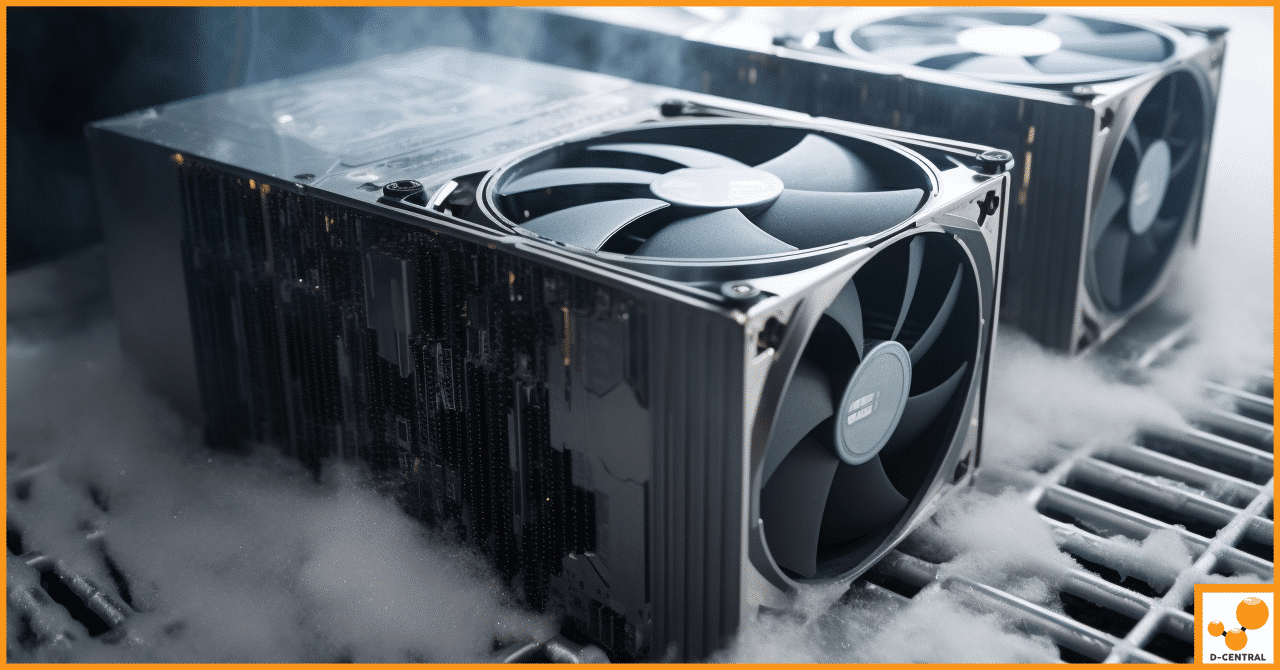
Guide to ASIC Maintenance: Ensuring Longevity and Efficiency in Hardware Lifecycle Management
In the dynamic world of cryptocurrency mining, Application-Specific Integrated Circuit (ASIC) miners have emerged as pivotal tools for anyone serious
4479 Desserte Nord Autoroute 440, Laval, QC H7P 6E2

Cryptocurrency mining has become a lucrative venture, attracting a growing number of investors looking to tap into this booming industry. One critical component of cryptocurrency mining is the use of specialized hardware devices known as Application-Specific Integrated Circuit (ASIC) miners. These devices are optimized for a single purpose: solving complex computational tasks at high speeds, making them highly efficient for mining various cryptocurrencies, including Bitcoin. However, with the intensive nature of their operations, ASIC miners generate significant amounts of heat, which can cause temperature-sensitive issues. In this blog post, we will explore the role of ASIC miners in cryptocurrency mining and the importance of addressing temperature-sensitive problems to ensure optimal performance and longevity of these machines.
Temperature-sensitive components in ASIC miner hashboards play a critical role in the overall performance and stability of the mining process. Integrated circuits (ICs) can exhibit degraded performance or even failure when subjected to extreme temperatures, while capacitors, resistors, and inductors may experience changes in their electrical properties due to temperature fluctuations. Voltage regulators, responsible for maintaining a stable supply of power, can also be affected by temperature changes, leading to unstable operation. MOSFETs (Metal-Oxide-Semiconductor Field-Effect Transistors) are similarly impacted, with temperature fluctuations potentially causing increased resistance and reduced efficiency. Consequently, managing temperature fluctuations is essential for ensuring the longevity and optimal performance of these components in ASIC miner hashboards. Proper thermal management solutions, regular maintenance, and troubleshooting using tools like dry ice or cold spray can help mitigate the impact of temperature fluctuations on these crucial components.
Thermal runaway is a phenomenon where the temperature of a component in an electronic system increases exponentially, leading to a rapid and uncontrollable rise in temperature. This process is often triggered by a combination of factors such as high currents, elevated ambient temperatures, and a lack of proper heat dissipation. In ASIC miner hashboards, thermal runaway can occur when temperature-sensitive components like ICs and MOSFETs are subjected to excessive thermal stress, causing them to become unstable and generate even more heat.
Thermal runaway poses significant risks to the performance and longevity of ASIC miner hashboards. It can cause irreversible damage to critical components, leading to a complete failure of the mining device. Additionally, if left unchecked, thermal runaway can create a domino effect, causing other components to fail and even posing a fire hazard. Due to the high energy consumption and heat generation of mining equipment, it is crucial to implement proper thermal management solutions and monitor the temperature closely to prevent thermal runaway.
Capacitor leakage and failure are common temperature-sensitive issues that can impact the performance of ASIC miner hashboards. Capacitors are essential components that store and release electrical energy to maintain a stable voltage across the mining device. However, when capacitors are exposed to high temperatures, their dielectric materials can break down, causing a leakage current and a drop in capacitance. This can result in unstable voltages and reduced efficiency, ultimately leading to a decline in mining performance.
Capacitor leakage and failure can be caused by factors such as high operating temperatures, voltage stress, and poor manufacturing quality. To prevent these issues, it is essential to choose high-quality capacitors with appropriate temperature ratings and ensure proper cooling of the ASIC miner hashboards. Regular maintenance and inspections can also help in early detection and replacement of faulty capacitors, preventing severe performance degradation.
Solder joint cracking is another temperature-sensitive issue that can affect the performance of ASIC miner hashboards. The solder joints connect various components like resistors, capacitors, and ICs to the PCB. Over time, temperature fluctuations and thermal stress can lead to the formation of cracks in these solder joints, causing intermittent or permanent electrical disconnections. This can result in a reduced hash rate, unstable operation, and even complete failure of the mining device.
In order to effectively troubleshoot and repair temperature-sensitive issues on ASIC miner hashboards, it is essential to correctly identify the problematic components. One method to achieve this is by using dry ice or MG Chemicals Cold Spray. These substances are effective in quickly cooling down components and identifying those that are sensitive to temperature changes. By applying these cooling agents on suspected components and observing their behavior, one can pinpoint which parts are causing the issue.
Another approach to identifying problematic components is monitoring performance changes. By closely observing the performance of ASIC miner hashboards, technicians can detect any abnormalities, such as unexpected temperature fluctuations or power consumption deviations. These anomalies can help identify the components that are not operating within their specified temperature range and are thus causing temperature-sensitive issues. Proper monitoring also ensures that technicians can take corrective actions before the problem becomes more severe, potentially causing permanent damage to the device.
Once the problematic components have been identified, the next step is to replace them in order to restore the device’s performance. Faulty components, such as capacitors, resistors, inductors, voltage regulators, and MOSFETs, can be removed and replaced with high-quality, temperature-resistant alternatives. This ensures that the hashboard can continue to operate at its optimal capacity, free from the effects of temperature-sensitive issues.
Replacing faulty components also ensures optimal operation of the ASIC miner hashboard. When components are functioning within their specified temperature range and are free from temperature-related issues, the device can operate at its full potential, maximizing its efficiency and productivity. Furthermore, by ensuring optimal operation, the overall lifespan of the hashboard is extended, resulting in a more reliable and cost-effective mining solution. Regular maintenance and proactive replacement of problematic components can prevent future temperature-sensitive issues, preserving the performance and longevity of ASIC miner hashboards.
To sum up, troubleshooting and repairing temperature-sensitive issues in ASIC miner hashboards is a vital aspect of maintaining optimal performance and longevity of the mining equipment. Preventive measures such as proper cooling solutions, regular maintenance and monitoring, and using high-quality components can significantly reduce the risk of temperature-related problems. Additionally, proper temperature management through effective cooling solutions and regular temperature monitoring can maximize ASIC miner performance and prevent potential damage and reduced efficiency. By implementing these best practices, miners can safeguard their investments and ensure maximum returns from their mining hardware.
Q: What is the role of ASIC miners in cryptocurrency mining?
A: ASIC miners are specialized hardware devices optimized for solving complex computational tasks at high speeds, making them highly efficient for mining various cryptocurrencies, including Bitcoin. However, with the intensive nature of their operations, ASIC miners generate significant amounts of heat, which can cause temperature-sensitive issues.
Q: What are some common temperature-sensitive issues in ASIC Miner Hashboards?
A: Some common temperature-sensitive issues include thermal runaway, where the temperature of a component in an electronic system increases exponentially, leading to a rapid and uncontrollable rise in temperature. Capacitor leakage and failure can impact the performance of ASIC miner hashboards when exposed to high temperatures. Additionally, solder joint cracking due to temperature fluctuations and thermal stress can affect the performance of ASIC miner hashboards.
Q: How can you troubleshoot and repair temperature-sensitive issues on ASIC Miner Hashboards?
A: To effectively troubleshoot and repair temperature-sensitive issues on ASIC miner hashboards, it is essential to correctly identify the problematic components using tools like dry ice or cold spray. Once the problematic components have been identified, they should be replaced with high-quality, temperature-resistant alternatives. Regular monitoring of device temperature and performance also plays a critical role in maintaining the longevity and optimal performance of these machines.
Q: What are some preventive measures and best practices for managing temperature-sensitive issues in ASIC miner hashboards?
A: Preventive measures include investing in high-quality cooling systems, optimizing airflow within the mining environment, operating ASIC miner hashboards in a temperature-controlled environment, and using high-quality components. Regular maintenance and monitoring of the ASIC miner hashboards, such as keeping the devices clean and dust-free, and regularly inspecting for signs of overheating, are essential best practices. Implementing temperature sensors and monitoring software can help track temperature trends and identify potential problem areas.
Q: Why is using high-quality components important in ASIC miner hashboards?
A: Using high-quality components is essential for mitigating temperature-sensitive issues. Quality components, designed to withstand temperature fluctuations, can prevent problems such as thermal runaway, capacitor leakage and failure, and solder joint cracking. Investing in quality components for repairs ensures long-term performance and stability. By selecting temperature-resistant and high-quality components, you can minimize the risk of failure, maximize the efficiency of your mining operation, and extend the lifespan of your equipment.
DISCLAIMER: D-Central Technologies and its associated content, including this blog, do not serve as financial advisors or official investment advisors. The insights and opinions shared here or by any guests featured in our content are provided purely for informational and educational purposes. Such communications should not be interpreted as financial, investment, legal, tax, or any form of specific advice. We are committed to advancing the knowledge and understanding of Bitcoin and its potential impact on society. However, we urge our community to proceed with caution and informed judgment in all related endeavors.
Related Posts

In the dynamic world of cryptocurrency mining, Application-Specific Integrated Circuit (ASIC) miners have emerged as pivotal tools for anyone serious

Welcome to the fascinating world where the realms of gaming and cryptocurrency converge. At the forefront of this innovative crossroads

In the ever-evolving world of cryptocurrency mining, having the right power supply unit (PSU) is crucial for optimizing performance and